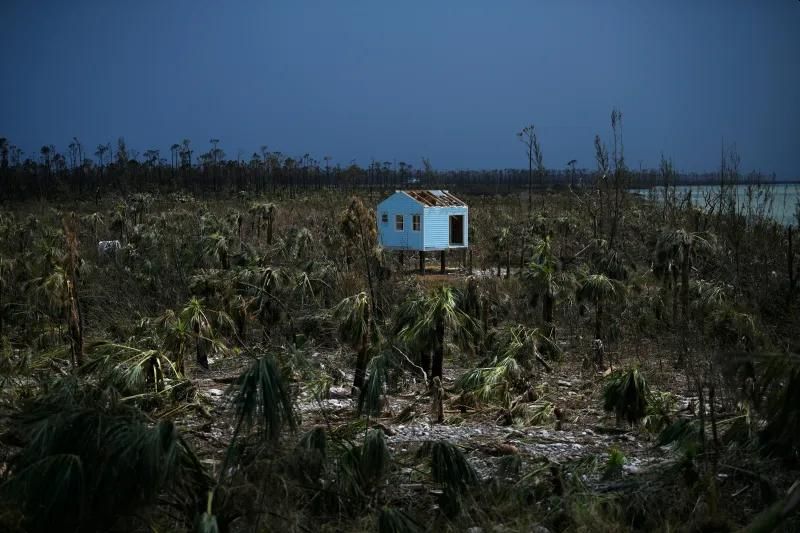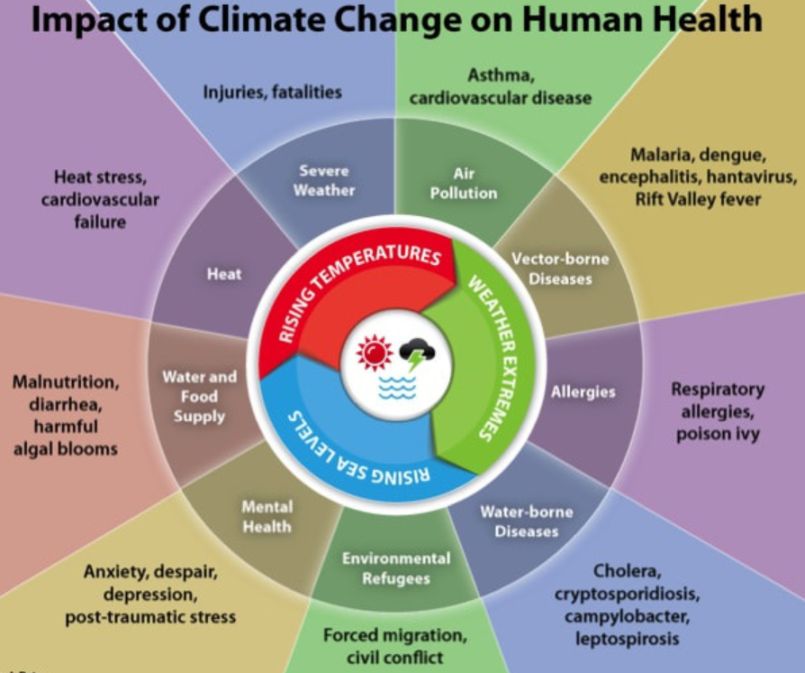By Eric Vandenbroeck
and co-workers
Measure The Harm Of Climate Change
Climate advocates.
Enshrined in the 2015 Paris climate accord, the 1.5-degree Celsius figure is the
world’s aspirational limit for average global temperature rise. For those
well-versed in climate science, it serves as a shorthand for avoiding the worst
consequences of climate change—the threats to nearly every aspect of human life
that stem from rising global temperatures. Behind the 1.5-degree veil await
more destructive storms, catastrophic coastal flooding, rampant hunger and
disease, extreme and deadly heat waves, and the demise of the world’s remaining
coral reefs.
But the 1.5-degree
slogan does not adequately convey these threats. It communicates one figure
about climate change—the average increase in global temperature since
preindustrial times—and assumes knowledge of climate dynamics that most people
lack. It fails to convey both the enormity of the stakes and the narrow window
for corrective action. The Intergovernmental Panel on Climate Change (IPCC),
the UN-sponsored body of scientists and economists that periodically assesses
the science and risks of climate change, calculates that global greenhouse gas
emissions must fall by 60 percent by 2035 (from 2019 levels) to limit global
warming to 1.5 degrees.
Yet the world has
made only modest progress toward curbing emissions. Despite the
urgent need for action, greenhouse gas emissions are now higher than ever in
human history. In 2022, global carbon pollution from burning fossil fuels,
deforestation, and other sources reached record levels, increasing the risk that
the world will crack the 1.5-degree ceiling and invite irreversible damage to
the planet’s ecosystems.
To galvanize
a global effort to stave off catastrophe, climate advocates need a
less abstract—and easier to visualize—goal around which to rally. An upper
limit for the average sea-level rise—say, of two feet or half a meter, which is
consistent with the most aggressive emission-reduction scenario—would offer
exactly that. More so than rising temperatures, rising seas offer tangible
evidence of the harms of climate change, including coastal erosion, abandoned
communities, sewage backups and overflows, contaminated water supplies, and
increased insurance costs. As countries prepare for the UN climate
change conference in Dubai in November and December 2023, they should establish
a ceiling for rising seas that would allow people to more easily grasp why it
is so crucial to keep 1.5 alive.

Rising Surf, Sinking Cities
In addition to
warming the atmosphere, greenhouse gas emissions trap heat in the oceans,
causing the volume of the world’s seawater to expand. Higher temperatures also
cause glaciers to melt and ice sheets to shrink, further accelerating sea-level
rise. Since 1880, global sea levels have risen by about eight inches on
average. And the rate of sea-level rise is accelerating; since 1993, it has
doubled.
Because some ocean
heating is already “baked in” from past greenhouse gas emissions, sea levels
will continue to rise at least somewhat, even if the world cuts emissions. But
the future rate of pollution will largely determine how much and how fast the
oceans continue to rise. Curbing emissions to achieve the 1.5-degree goal could
prevent runaway sea-level rise: the IPCC estimates that if temperatures remain
at or below 1.5 degrees, the global mean sea level rise will likely be between
1.2 feet and 2.5 feet by 2100. But if emissions go largely unchecked, the rise
in the United States could be between 3.5 and 7 feet by 2100.
Rising seas sow
destruction. They increase the odds of flooding from storm surges, which can
damage wetlands, spoil fields for agriculture, contaminate freshwater aquifers,
and kill plants and trees. When sea levels are higher, storm surges can travel
farther inland, affecting communities that have not previously experienced
flooding. Roads become impassable, power and wastewater treatment plants flood,
communication systems fail, and health care grind to a halt. Higher sea levels
also accelerate coastal erosion: land slips away, and islands vanish, leaving
people without ground under their feet.

Over ten percent of
the world’s population lives along low-elevation coastlines vulnerable to
sea-level rise. Many major global cities, including Miami, Mumbai, New York,
Shanghai, and Tokyo, are highly vulnerable to coastal flooding. In
the United States, close to half of coastal communities surveyed have
failed to plan adequately for rising seas. The result will be greater expenses
for taxpayers since retroactively fitting a levee or a bridge, for instance, is
typically far more expensive than building resilient infrastructure.
Already, rising seas
are claiming land and forcibly displacing people. UN
Secretary-General António Guterres has warned that sea-level rise could cause
low-lying communities, including entire island countries, to disappear forever,
driving a “biblical scale” exodus from coastal regions. This, in turn, would
spur “ever fiercer competition for freshwater, land, and other resources,”
according to Guterres. Recognizing these growing risks, the UN Security Council
held its first session focused on sea-level rise in February 2023.
Make It Real
Scientists warn that
the world has nearly run out of time to achieve the 1.5-degree goal and that
countries must hasten their climate efforts. They should aim to eliminate
emissions of carbon dioxide as well as other greenhouse gases, especially
methane; develop technologies to remove carbon from the atmosphere;
expand carbon sequestration efforts; accelerate research on climate
interventions such as solar radiation management; and ramp up efforts to build
resilience in the face of an already changing climate.
Establishing an upper
limit for sea-level rise would help build support and provide momentum for all
these efforts. A clear ceiling would enable people to visualize the impending
harm from rising seas, make it harder for governments to ignore climate risks,
and intensify the pressure to deliver meaningful commitments in climate policy
negotiations.

Rising seas offer
visually arresting evidence of the threat of climate change:
before-and-after photos of climbing seas reveal dramatic coastal erosion.
Images of “sunny day” floods—high tides fueled by rising seas inundate
coastal communities even in good weather—tell a story of hardship and economic
loss. Photos of “ghost forests” resulting from saltwater floods show profound
ecological damage. And charts of the growing reach of storm surges depict the
march inland of rising seas as they swallow buildings and towns.
An upper limit for
rising seas could help coastal communities improve their planning. For
instance, such a ceiling could help clarify how much sea-level rise is already
unavoidable, even if local factors must be considered to make exact
projections. A limit on the sea-level rise could also illuminate the tradeoffs
involved in climate adaptation and mitigation investments. Across the globe,
countries have failed to account for the long-term risks of climate change
adequately. That has led to adaptation choices that fail to consider the
dangers of increased sea-level rise, such as the continued development of flood
zones. Limiting sea-level rise could incentivize better choices by highlighting
the dangers of building infrastructure near shorelines.

State and local
governments in the United States should be leading the charge for an upper
boundary on sea-level rise. Consider the plight of Florida, which would be the
15th-largest economy in the world if it were a sovereign country—larger than
Indonesia or Mexico. Threatened by rising seas and more intense storms, over
64,000 Florida homes worth $26.3 billion could become “chronically inundated”
by 2045. A limit on the sea-level rise would help contain the threat that
rising tides pose to Florida’s real estate and property insurance markets and
thereby help ensure the state’s economic viability.
When world leaders
gather in Dubai for this year’s UN Climate Change Conference, they should agree
to set a limit for rising seas just as they have for rising temperatures. Doing
so would underscore the existential threat small island nations and thousands
of coastal communities face. It would also make discussions about climate “loss
and damage,” which will be on the agenda in Dubai, more concrete. An upper
limit on the sea-level rise would reinforce the rallying cry to “keep 1.5
alive” and drive governments to act more swiftly on climate change.
For updates click hompage here